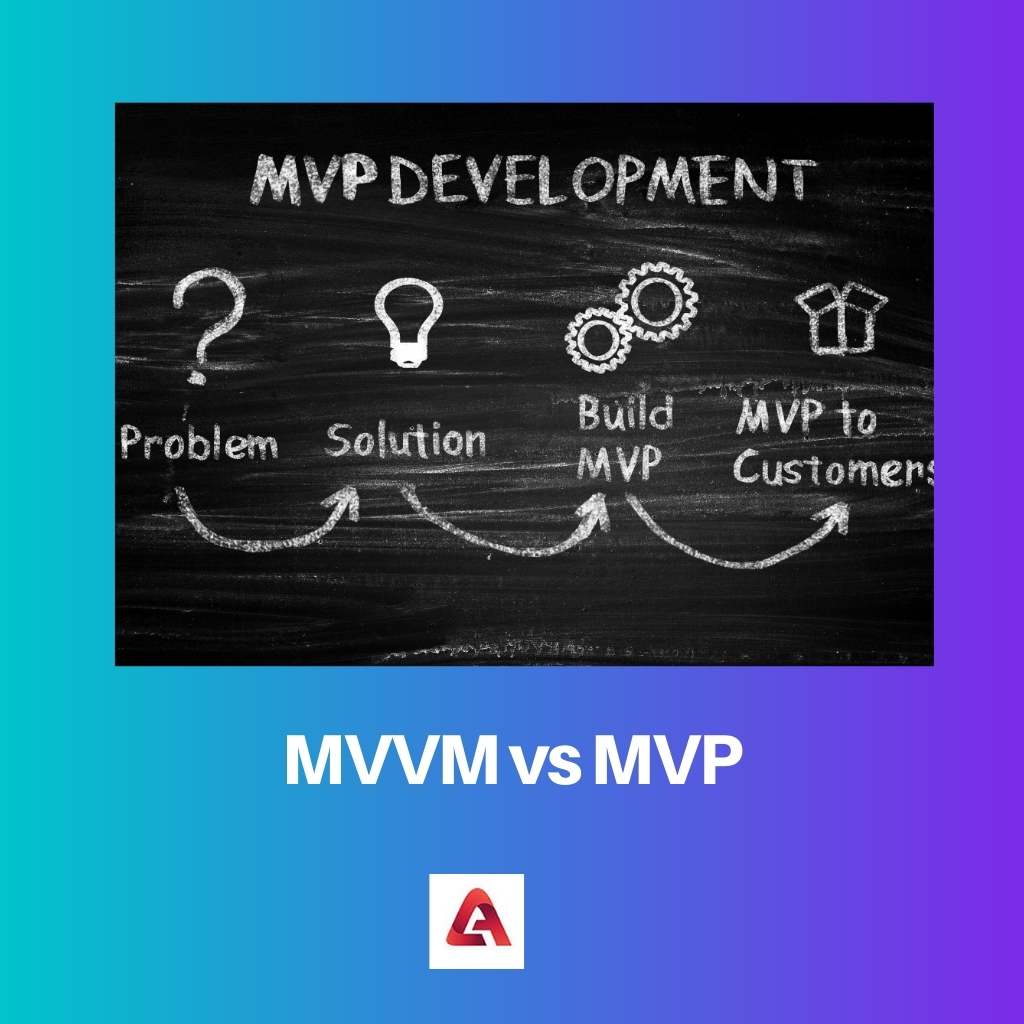The model’s presentation before bringing anything public has always been mandatory in the business world. None of the apps or models was commercialized before it had completed all the tests.
Key Takeaways
- MVVM stands for Model-View-ViewModel and separates the user interface, data, and business logic, while MVP represents Model-View-Presenter and splits the data, UI, and presentation logic.
- MVVM relies on data binding for UI updates, enabling automatic UI refreshes, whereas MVP requires manual updates to the UI by the presenter.
- MVVM is well-suited for modern, data-driven applications and platforms like WPF and Xamarin, while MVP works well for traditional applications and platforms like Windows Forms.
MVVM vs MVP
MVVM separates the user interface (View) from the underlying data (Model) and the presentation logic (ViewModel) and automatically updates. MVP separates the user interface (View) from the presentation logic (Presenter) and the underlying data (Model) and works with manual updates.

The MVVM stands for the Model View View Model. The MVVM is used by the entrepreneurs and developers of the companies to showcase their ideas practically without launching them in the market.
The profits or features lacking in the model can be known. This feedback helps the company to improve the real model and also helps in attracting investors.
Comparison Table
| Parameters of Comparison | MVVM | MVP |
|---|---|---|
| Year Introduced | It was introduced in the year 2005. | It was introduced in the year 2001. |
| Full-Form | The MVVM stands for the Model View View-Model. | The MVP stands for the Minimum Viable Product. |
| Invented By | It was invented by Ken Cooper and Ted Peters. | It was invented by Frank Robinson. |
| Definition | The MVVM is the model developed by the developers to provide the real working model of the product. | The MVP is the model developed by the developers and send to the market for research. |
| Cost | The MVVM is found cheap as compared to the MVP. | The MVP is found costly as compared to the MVVM. |
| Restructure | The restructure of the MVVM is found a bit complicated as the whole coding needs to be revised and rewritten. | The restructure of the MVP is simple as compared to the MVVM. |
| Reference | The reference for the MVVM View is the View-Model that is created by the markup language. | The reference for the MVP is not based on the customer. The product has been launched for knowing the feedback of different customers. |
| Controller | The Controller is the professional who may or may not be of the same company. | The Controller is the customer himself. |
What is MVVM?
To represent the idea, I will provide a model to the investors. That will help them to convey the business pros and cons. This becomes a useful tool to attract investors.
They first developed event-driven programming of the interface that users would interact. The first time John Gossman wrote about the MVVM in his blog was in 2005.
The developers provide the .xaml file of the coding that would help to know the front end of the app or game. This also helps the programmer to change the coding if needed and find loopholes if there are any in the coding.
Components of the MVVM are the following:
- View Model: The View was only related to view, but the View Model even works. The View model is connected to data and works how a user interacts with it. You can say it’s the sample before commercializing the product.
- Binding: The binding includes the markup language or, in simpler words, the coding of the project. The language is called XAML.
What is MVP?
The MVM stands for Minimum Viable Product. The MVM is the product that was launched in the market for feedback.
This also helps the company to know if the customers need any new features in the version. This is a way to find out the mindset of the customers.
The developers use the MVM model as a time-saving method. Industries and companies use this method to decide whether this new idea would work in the market or not.
Main Differences Between MVVM and MVP
- The MVP process is a bit costly compared to the MVVM.
- The example of MVP is the base models of automobiles, and MVVM is the app interface provided before launching the app publicly.
- https://link.springer.com/chapter/10.1007/978-1-4302-3501-9_13
- https://link.springer.com/chapter/10.1007/978-1-4302-3501-9_13

The use of MVVM is beneficial for developers as it allows them to detect bugs and improve the model before launching. I also appreciate that the developers include a binding feature in the MVVM to enhance the UI.
The MVP process seems quite time-saving as it provides the opportunity to gather customer feedback before fully launching the product. It’s a smart approach to understand market needs.
The concept of MVVM and MVP is intriguing. It’s interesting to see the evolution of model development for products and applications over the years, especially in terms of features, cost, and restructuring.
I find the idea of using MVVM as a practical tool for attracting investors quite commendable. It provides a tangible representation of the concept and allows for necessary improvements.
The detailed comparison table between MVVM and MVP provides a clear understanding of the differences in terms of cost, restructure, and reference. It’s helpful for decision-making.
The reference sources provided for MVVM and MVP are valuable for further exploration. It’s important to have reliable resources when analyzing and understanding these models.